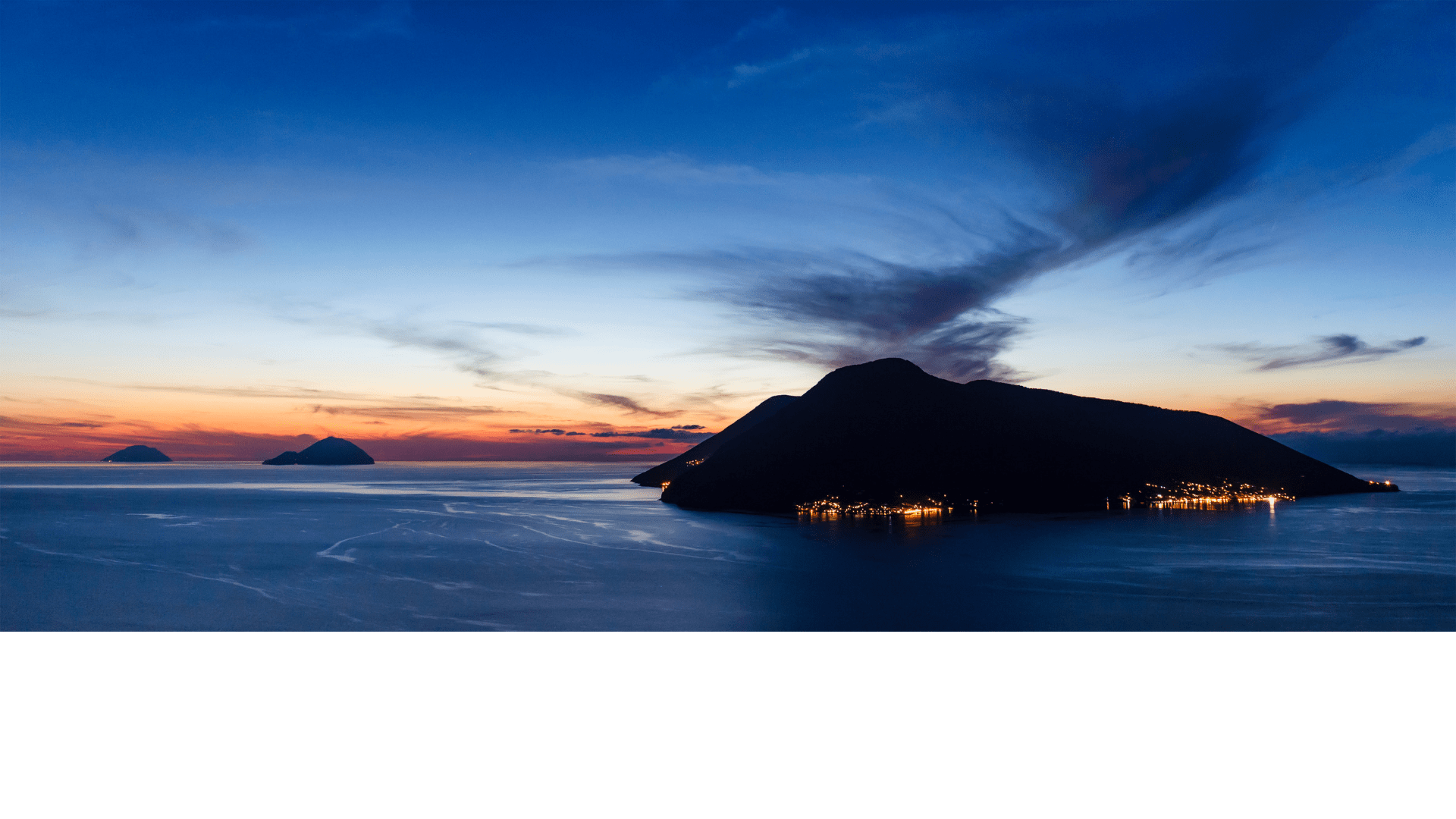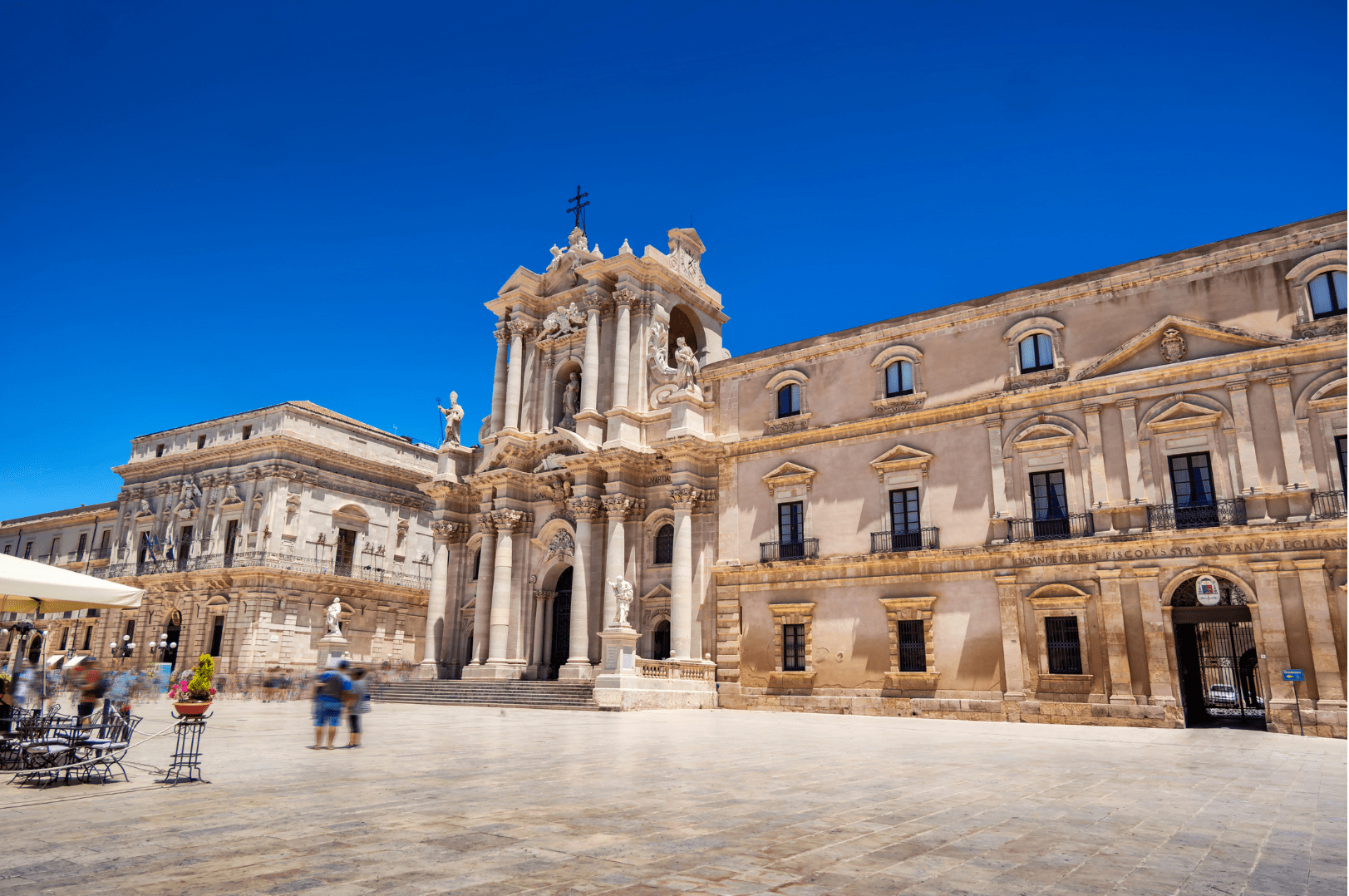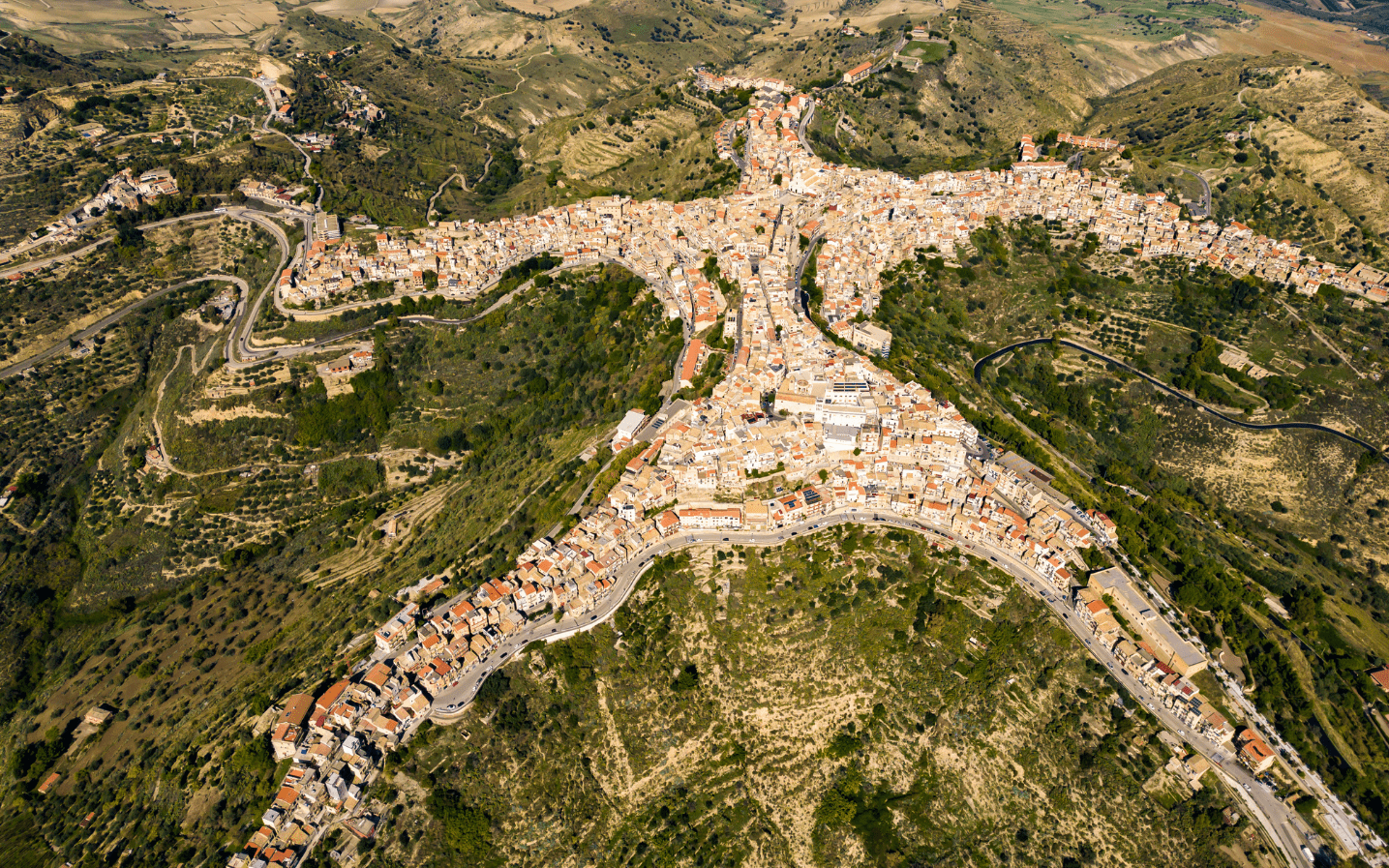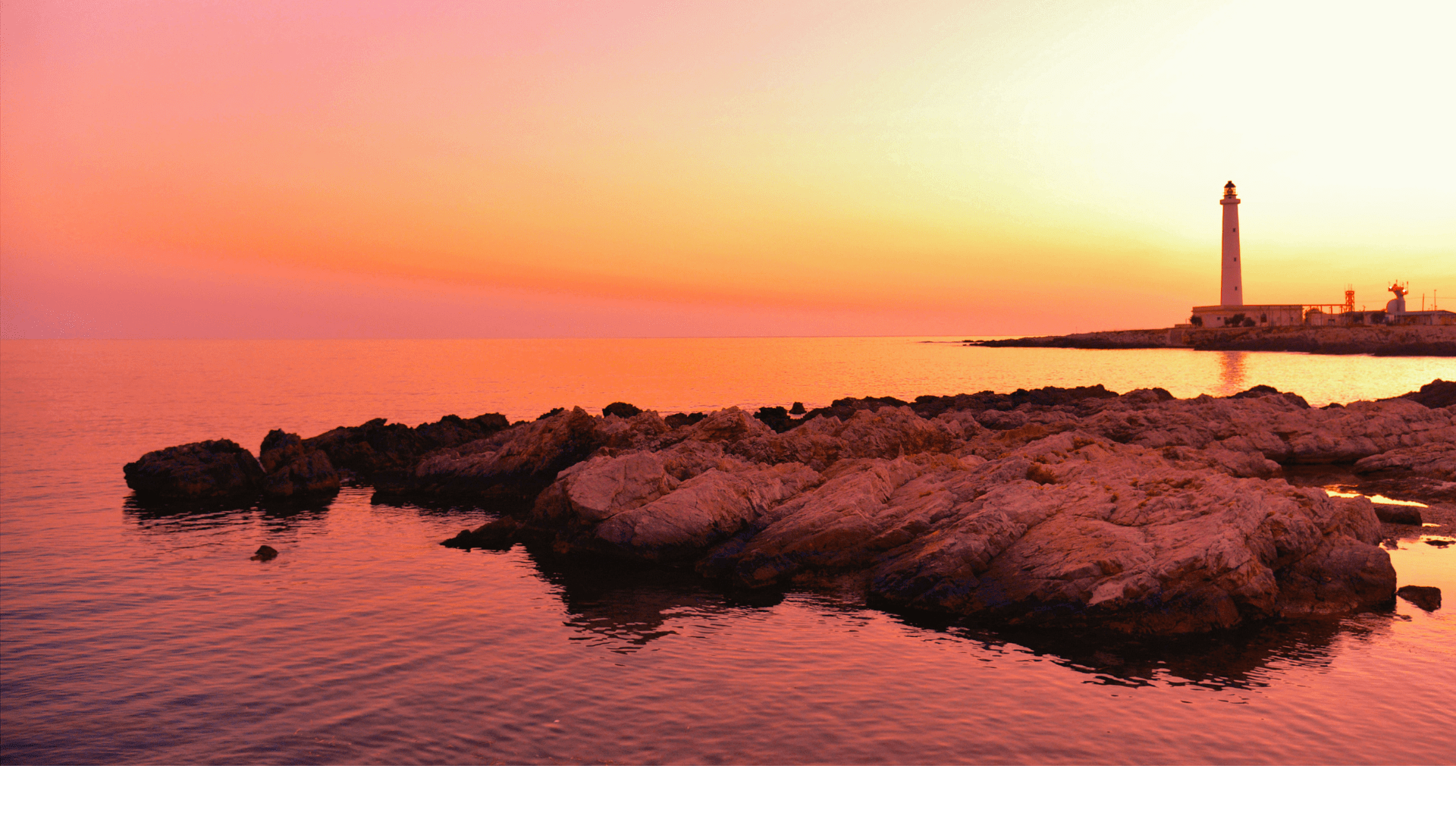DAY 1 ARRIVAL IN SICILY – OLIVERI – TINDARI
The origin of Oliveri dates back to the first century B.C. and was determined by the exodus of the inhabitants of nearby Tyndaris, which
had been destroyed by a terrible landslide. In the Middle Ages it turns out to be a simple fortress, around which developed the village, inhabited
mainly by fishermen, but the documented evidences are few. In this bay created by the strip of land of the reserve, the sea is almost
always calm, transparent and clean. A note of color is given by the characteristic boats of fishermen in dry. The part with lower and calmer
water is the one closest to the reserve. Myth, art, culture, fairy tale landscapes: this is Tindari. Founded in 396 a.c. by Dionysius of Syracuse, as a colony of Syracuse mercenaries. Since then its history has been a succession of stories, myths and legends that have left an indelible mark in the popular imagination. First a naval base of the Carthaginians, then of the Romans, conquered by the Byzantines and destroyed by the Arabs, it is known for an epic naval battle – the
battle of Tindari, but above all for the presence of a Black Madonna still venerated at the sanctuary that occupies the ancient acropolis.
However, the Sanctuary of the Black Madonna is the main attraction of Tindari. Inside the sculpture in cedar wood representing the Virgin with
child, would have come to Tindari in an attempt by the faithful to remove it from the iconoclastic fury of the eighth century.
DAY 2 VULCANO – PANAREA – STROMBOLI
Vulcano is the closest to the coast among the 7 islands of the Aeolian archipelago, a UNESCO World Heritage Site. According to Greek
mythology, Vulcan, also called “hothead”, housed the forges of Hephaestus, god of fire and blacksmith of Olympus, who had at his
service none other than the Cyclops. The ancient volcano continues to manifest its vigor through the fumaroles,
the jets of steam present both on the ridge and on the seabed, and the presence of sulphurous mud appreciated for their therapeutic properties.
Panarea is the smallest and the lowest of the 7 Aeolian islands, but also the oldest, from a geological point of view.
With its rocks and islets it forms a sort of “archipelago in the archipelago” in the stretch of sea between Lipari and Stromboli. Pristine paradise
under the Sicilian sun, at sunset becomes the queen of nightlife, epicenter of Aeolian worldliness.
Of the seven Aeolian Islands, Stromboli is the northernmost, as well as the most known for its namesake submerged volcano, one of the few in
the world in persistent activity. The continuous activity of the volcano explains the presence of the characteristic beaches with black and warm sand.
A kilometer and a half is the uninhabited islet Strombolicchio, a remnant of an ancient volcanic chimney.
DAY 3 SALINA – ALICUDI – FILICUDI
Salina, the greenest of the Aeolian Islands. Favoured by its protected position, in the middle of the Sicilian archipelago, Salina, the second
largest among the Aeolian Islands, is also the richest in vegetation and water of the archipelago declared a UNESCO World Heritage Site,
certainly the one where volcanic activity is most sleepy. Called, not by chance, green island, its remote volcanic origins,
witnessed by the ancient extinct craters of the Fossa delle Felci and Monte Porri, 2 of the 6 volcanoes that once inflamed it, are now
enclosed in a lush nature reserve that occupies a large part of the territory and hosts several itineraries at high altitude for lovers of trekking.
Alicudi and Filicudi, the wildest and slowest of the Aeolian Islands Get lost, get off the beaten path, pull the plug and regenerate. This is
what people usually look for when they decide to spend time in Alicudi and Filicudi, the wildest and most authentic islands of the Aeolian
archipelago, in the southern Tyrrhenian Sea, where electricity arrived in homes only twenty years ago. This couple of more secluded islands,
sisters for contiguity and affinity elective, is almost always destination of a slow and sustainable tourism, of holidays really detox, in which to
follow the rhythms of an uncontaminated nature. Here there are neither asphalt nor motor roads, the only means of transport are the donkeys,
the scekes, as the locals call them; one generally moves on foot, on stairs and lanes in lava stone, paths and mule tracks. A simple tip: comfortable
shoes and no heels.
DAY 4 VULCANO – LIPARI
Lipari the sweet, the most placid of the Aeolian islands Lipari is the largest of the Aeolian Islands.
Administrative and economic center of the entire Sicilian archipelago is the least “volcanic” among its 7 islands, as evidenced by the weak
hydrothermal and fumarole activity in its western part. However, take note, it is the one that best harmonizes the wild Aeolian charm with the
convenience of connections and services.
The urban area extends between the bars and restaurants overlooking the beautiful square of Sant’Onofrio, better known as Marina Corta and
Via Francesco Crispi, called Marina Lunga: in the middle, from May to October, are concentrated in the evening the grinding and the nightlife
of the locals.
The rest of the island is well connected to the center by a network of paved roads, but if you really want to get into its flow of scents, sounds
and views and enjoy a bit of that placid sweetness alluded to by its Greek name, Meligunis, we suggest you to turn Lipari by bike or walk it,
wandering among the dry walls of its districts: Canneto, Acquacalda, Quattropani.
A must is the Cloister de normanni. Equally spectacular is the mighty structure of the Castle, a real acropolis,
which stands on a promontory inhabited by the Neolithic. If you are fond of relics, stop, always inside the Castle, in the Cathedral, dedicated to
Saint Bartholomew, patron saint of the entire archipelago: the church still preserves the “sacred inch” of the saint
DAY 5 GIARDINI NAXOS
Giardini Naxos is a beautiful town in the province of Messina, Sicily. Until the 70s Giardini Naxos was a quiet
fishing village, while now it has become one of the most visited tourist attractions in Italy with wonderful beaches,
monuments and clubs.
The old town is characterized by squares and historic streets, such as Piazza Abbata Cacciola and Via delle Rimembranze.
Not to be missed is also the Castle of Schisò. After being inhabited in the Norman and Spanish periods, it is now
completely uninhabited and is part of the archaeological complex of Giardini Naxos. The archaeological site preserves
the remains of civil and religious buildings dating back to the Roman and Greek periods. Among the buildings of worship
to visit during your stay in Sicily, we remember the Mother Church of Santa Maria Raccomandata.






